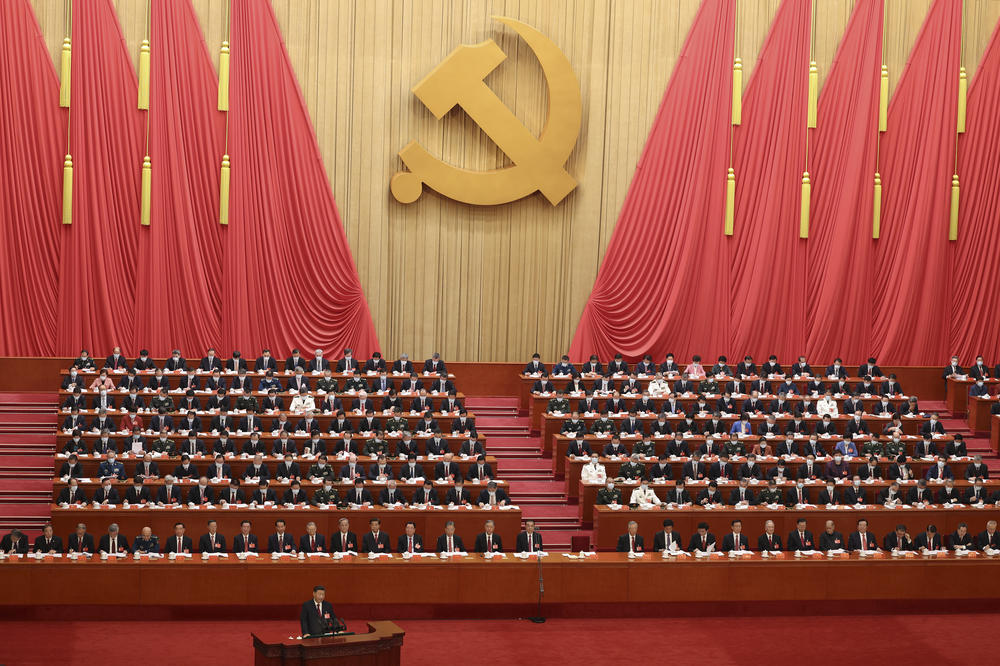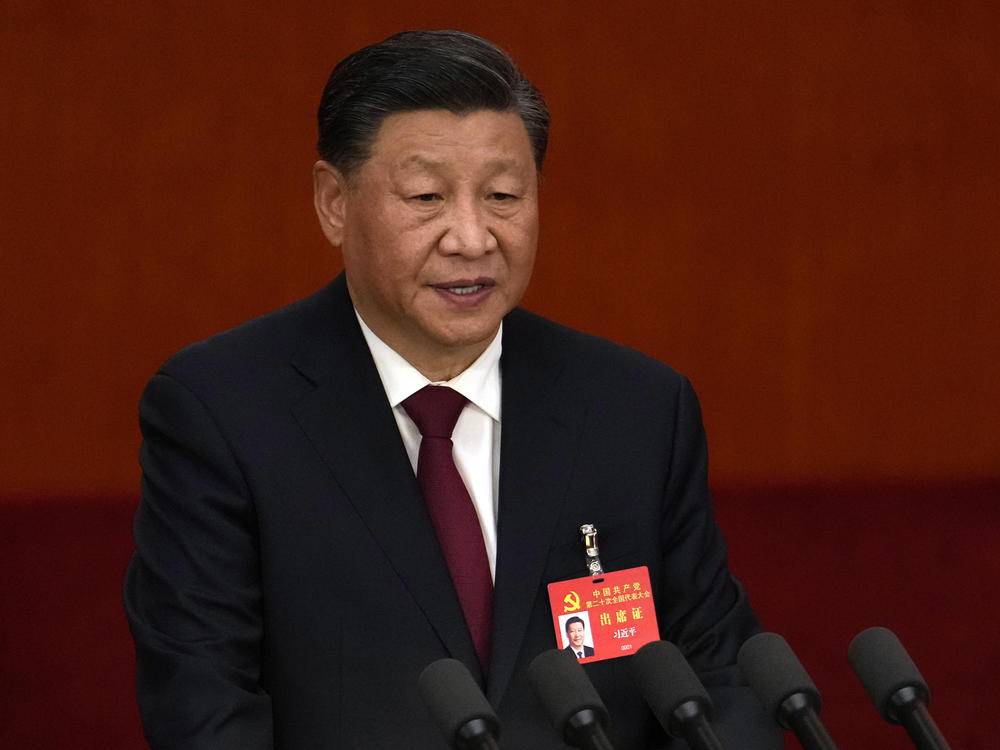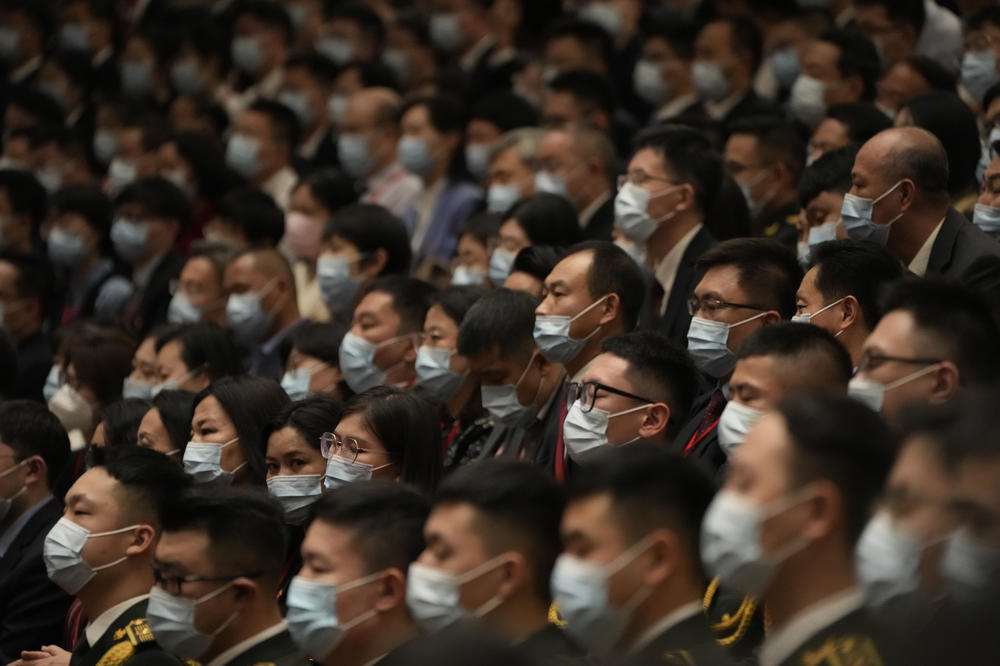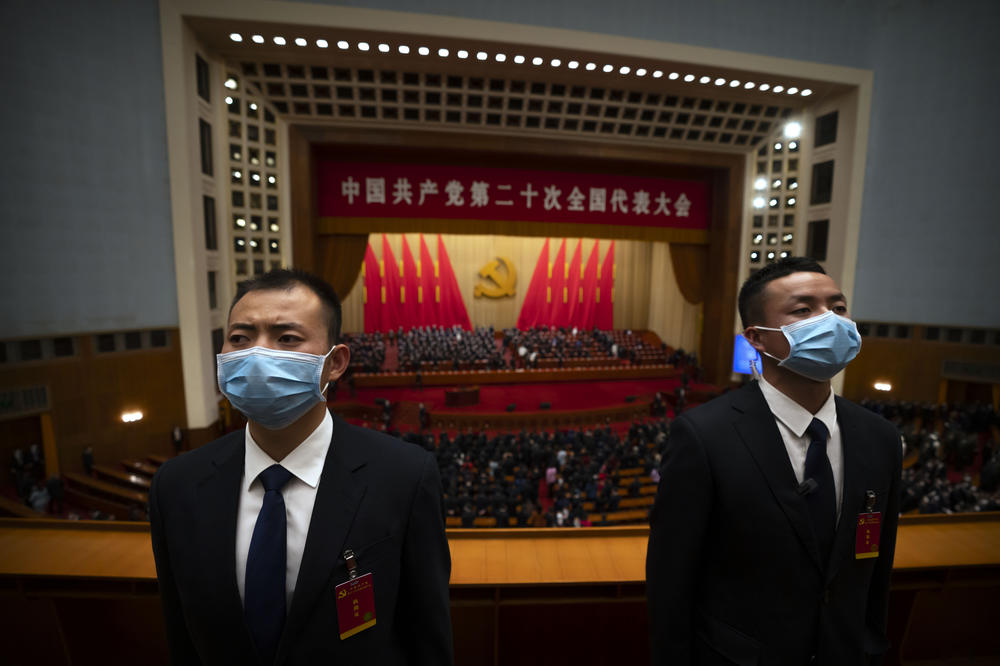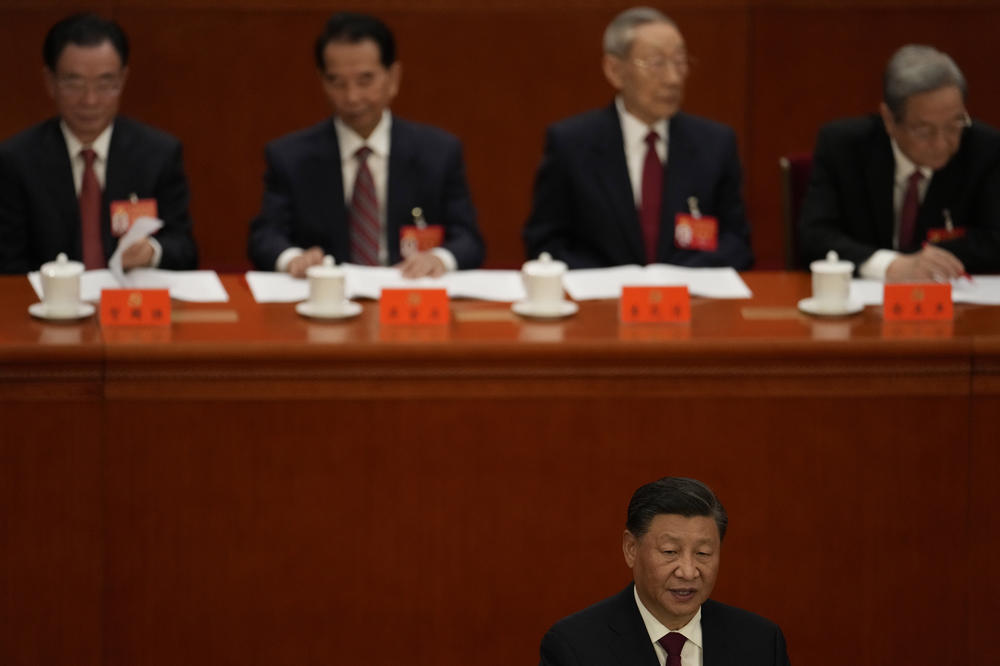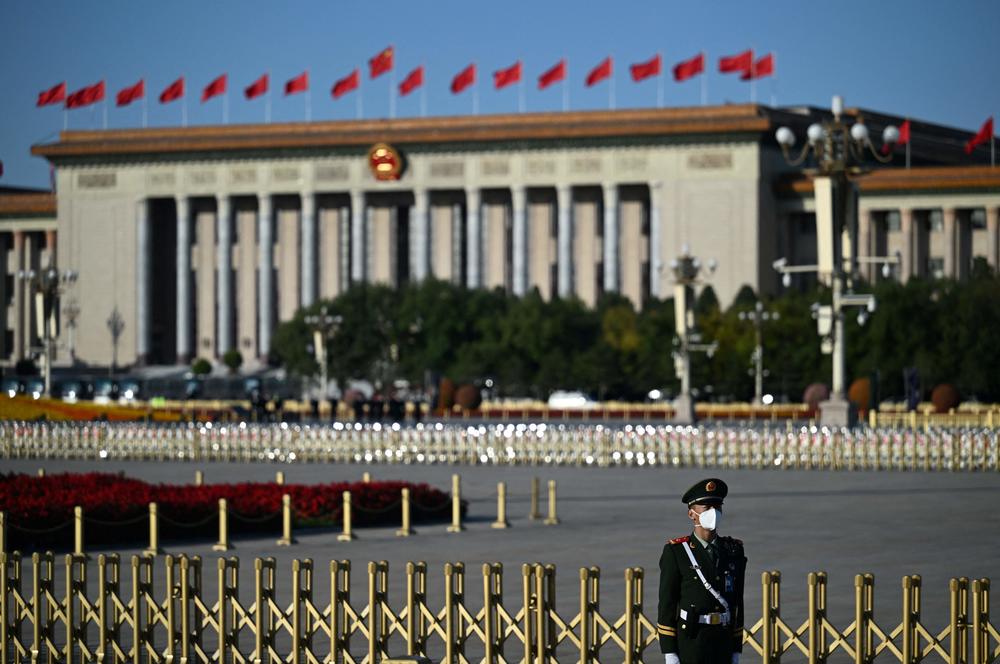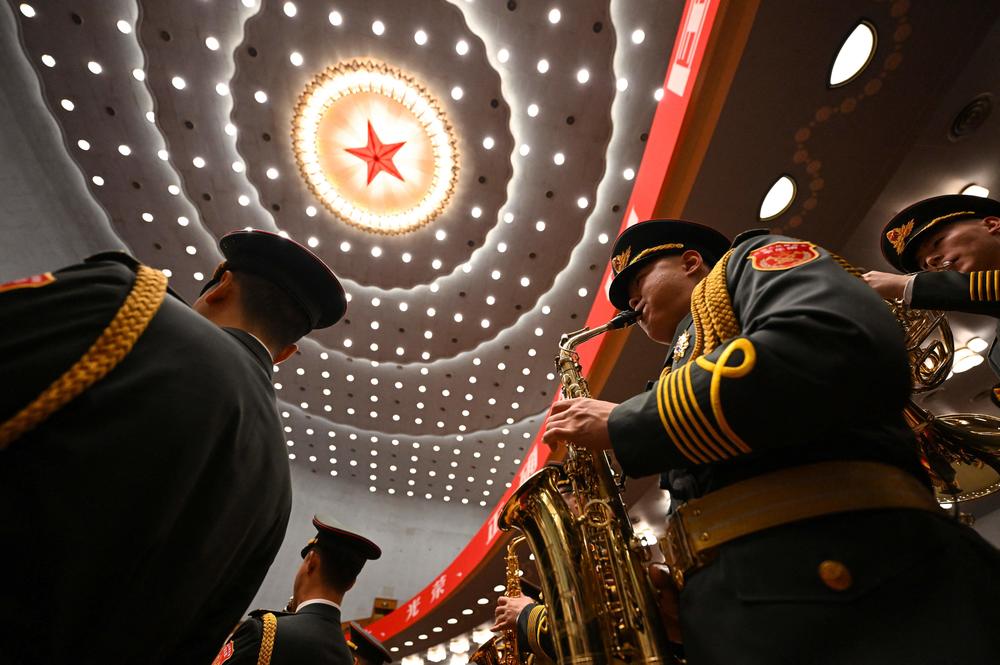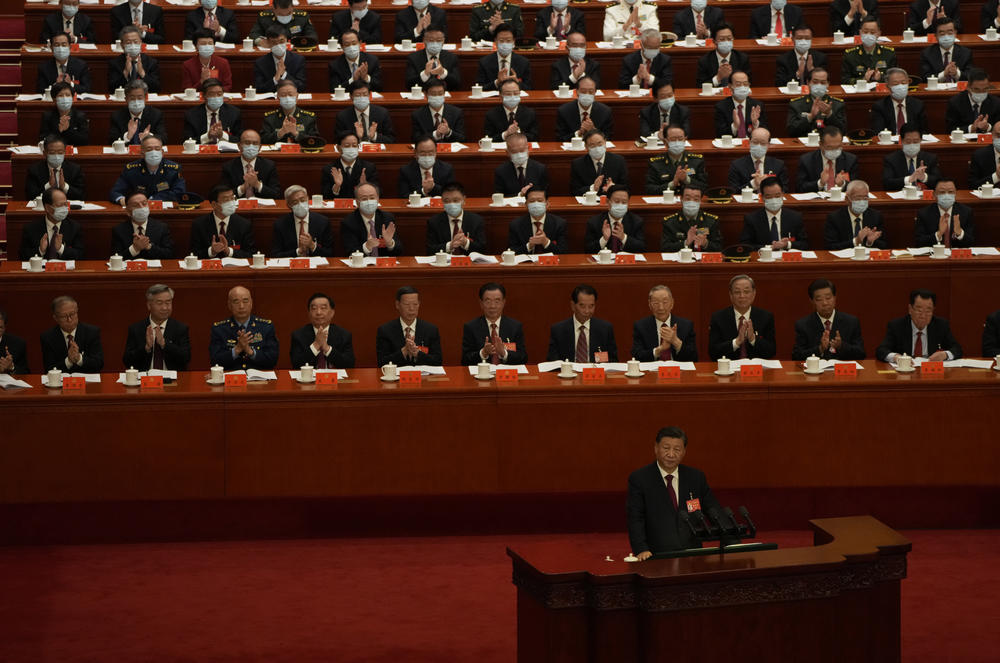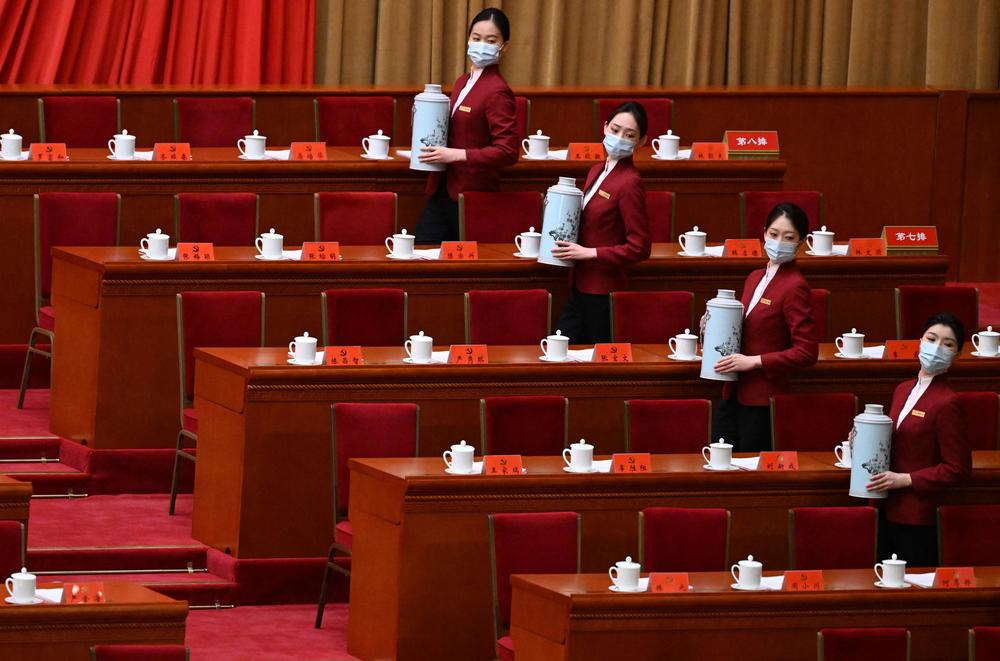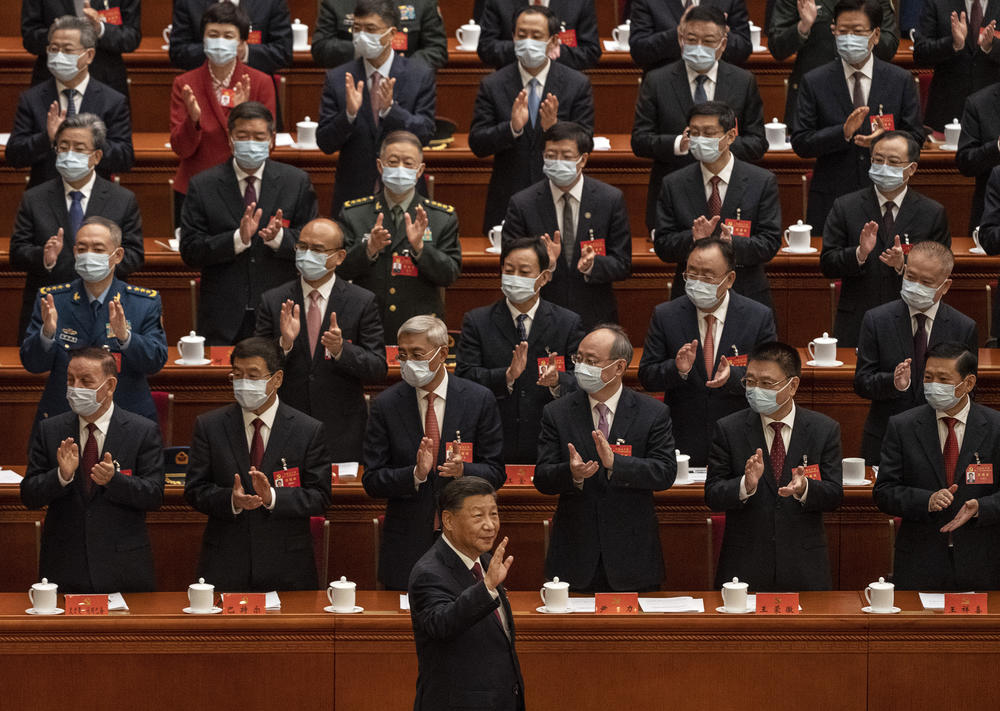Section Branding
Header Content
These are 4 key points from Xi's speech at the Chinese Communist Party congress
Primary Content
Updated October 16, 2022 at 2:34 PM ET
BEIJING, China — Chinese President Xi Jinping gave a speech that lasted nearly two hours at a Communist Party congress on Sunday, kicking off a conclave that is widely expected to extend his rule into a second decade.
More than 2,300 hand-picked delegates from around the country have converged on Beijing for the weeklong event, which happens once every five years. It will set the tone for policy in the coming years and reshuffle the country's top officials.
In the Great Hall of the People, on Tiananmen Square, Xi trumpeted the party's achievements since he came to power a decade ago and outlined principles for party rule and policies in the years to come.
Below are four key takeaways from his speech:
Xi doesn't back down from 'zero COVID'
Since the early days of the pandemic, China's COVID control policies have meant tight borders, mandatory mass testing, invasive digital surveillance, forced quarantines and snap lockdowns — often of entire cities.
Xi told the 20th Party Congress that China's approach "put people and lives above all else." He offered no signals that China's tough COVID rules would end any time soon.
"In launching an all-out people's war to stop the spread of the virus, we have protected the people's health and safety to the greatest extent possible and made tremendously encouraging achievements in both epidemic response and economic and social development," he said.
This is hardly a surprise. Case numbers and deaths in China have been kept in check. And Xi has staked his reputation on the "dynamic zero COVID" policy by backing it firmly, time and again.
But after nearly three years of the policy, frustration and weariness are growing in China. Just three days before the congress started, protest banners were hung on a Beijing overpass denouncing the COVID policies and calling for Xi's ouster in a rare display of civil disobedience.
There's a push for economic improvement — but it will be an uphill battle
China started the year aiming for economic growth of "around 5.5%." The target has not been officially jettisoned, but the authorities do not stand a snowball's chance in hell of hitting it — thanks, in large part, to the "dynamic zero COVID" policy.
A Reuters poll published on Saturday found that economists expect GDP to grow just 3.2% this year. After the dip in 2020, when COVID first hit, it will be "the worst performance since 1976 — the final year of the decade-long Cultural Revolution that wrecked the economy."
The economy had been slowing before COVID, though, and Xi said "high-quality development" was key to China's future, while the party should also aim to raise incomes and make sure people are happy. He said the next five years will be "crucial."
He also paid lip service to "reform and opening," the party's guiding principle over the past four decades that unleashed market forces and ignited China's economy.
"We must intensify efforts to advance reform and explore new ground, and we must remain steadfast in expanding opening up," he said.
Xi has said China's commitment to reform and opening would not waver. At the same time, he has amped up the role of the state in economic affairs and taken dramatic steps to put what he sees as unruly sectors — like real estate, tech and after-school education — in check.
Xi highlighted the party's goal of making China more self-sufficient in areas including food production. He said the country should consolidate its "leading position in industries where we excel" and shore up weaknesses in areas vital to China's national security.
Xi hints at further pressure on Taiwan
Taiwan has loomed large for all of China's leaders since the Communist Party swept to power in 1949 — but Xi has pressed it with a greater sense of urgency.
His biggest applause of the day came when he said: "The wheels of history are rolling on toward China's reunification and the rejuvenation of the Chinese nation. Complete reunification of our country must be realized, and it can, without doubt, be realized."
Beijing considers the self-governed island a part of China and wants to unite it with the mainland eventually. The party casts this as a sacred mission, and Xi wants to be the leader who makes it happen.
"We will continue to strive for peaceful reunification with the greatest sincerity ad the utmost effort, but we will never promise to renounce the use of force, and we reserve the option of taking all measures necessary," he said.
Taiwan is a core issue in China-U.S. relations, which have deteriorated sharply in recent years. Friction over Taiwan has also increased, and some analysts say the risk of war is elevated.
China's global ambitions continue
A big piece of Xi's agenda for the past decade has been to advance "the great rejuvenation of the Chinese nation," and part of that has been reclaiming what the party sees as China's rightful standing in the world.
Gone are the policies of Xi's predecessors, who followed a less assertive approach on the global stage that was calibrated to afford China the time and space to develop its economy and build its strength quietly.
Xi repeated his mantra that now is a historical opportunity for China to raise its standing and influence in the world.
"At present, momentous changes of a like not seen in a century are accelerating across the world," Xi said. "A new round of scientific and technological revolution and industrial transformation is well under way, and a significant shift is taking place in the international balance of power, presenting China with strategic opportunities in pursuing development."
And he said the party should foster a sense of "purpose, fortitude and self-belief ... so that we cannot be swayed by fallacies, deterred by intimidation or cowed by pressure."
He reiterated China's foreign policy principles — respecting other countries, staying independent and peaceful, and opposing "hegemonism and power politics, the Cold War mentality" and double standards.
Copyright 2022 NPR. To see more, visit https://www.npr.org.
